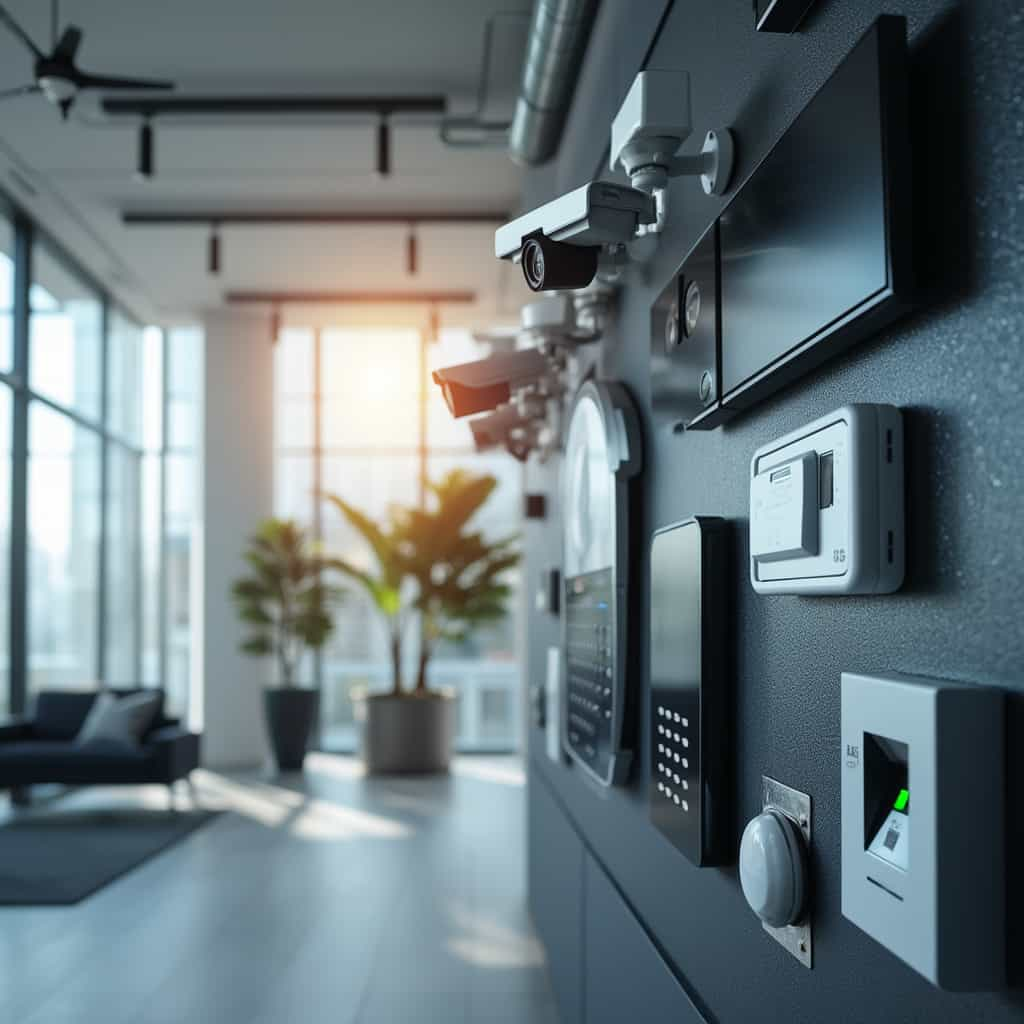In the modern business landscape, safeguarding one’s assets is paramount, and commercial security systems play a pivotal role in protecting business premises. These systems are multifaceted, offering a range of features from basic intrusion alarms to advanced surveillance networks. This article delves into the nuances of selecting an appropriate security system, evaluating cost, benefits, and specific solutions that can be tailored to commercial needs.
Historically, security systems have evolved from simple locks and keys to sophisticated digital devices. The advent of technology has transformed how we perceive security, embedding digital surveillance and remote access into our everyday lives. Notably, surveillance cameras, once a novelty, have become commonplace. Originally developed for military use during World War II, these devices have gradually filtered into commercial and residential use, offering visibility and accountability.
When considering a security system, the first step is evaluating the specific requirements of your business. Are you securing a single storefront or a sprawling office complex? An important consideration is whether your business handles sensitive material, in which case confidentiality becomes as essential as deterrence. Here, systems like biometric access controls and alarm responses become invaluable.
Cost is a significant factor in security system decisions. Prices vary based on system complexity and the extent of coverage desired. Basic alarm systems might start around $500, while comprehensive systems with networked cameras, access control panels, and monitoring services can exceed $20,000. It’s not uncommon for businesses to seek a balance between cost and necessity, often opting for modular systems that can grow with their needs.
A pertinent example is ADT, one of the largest security companies, offering services tailor-made for various commercial needs. ADT’s systems typically start with a base price for setup, with recurring costs approximately $30 to $60 per month for monitoring. Their portfolio includes not only traditional surveillance options but also advanced features like environmental monitoring for fire or gas leaks, adding substantial value for industries like retail or manufacturing.
In contrast, new entrants like SimpliSafe offer a budget-friendly alternative, promoting DIY installation and no-contract monitoring. Starting as low as $200 for equipment, plus $15 to $25 monthly for monitoring, SimpliSafe appeals to smaller businesses or startups looking for straightforward solutions without hefty upfront costs. Despite their affordability, SimpliSafe systems include essential intrusion detection capabilities and optional camera integrations.
The complexity of each system often rests in its level of integration with other business systems. Larger solutions might feature seamless integration with IoT devices, allowing for automation and enhanced intelligence through machine learning algorithms. Such integrations can provide predictive insights, aiding in threat assessment and reducing response times. An example of such forward-thinking technology is Verkada, which offers cloud-based solutions that provide real-time analytics and remote access.
Privacy concerns are frequently raised alongside security capabilities, particularly as data collection grows more pervasive. The General Data Protection Regulation (GDPR) in Europe and similar laws elsewhere impose strict guidelines on how surveillance data must be managed. Business owners must ensure their chosen systems comply with these regulations to avoid legal repercussions. Experts advise consulting legal professionals to navigate these complex requirements.
Expert opinions emphasize the importance of continuous assessment and upgrading of security systems. As technology advances rapidly, systems that were state-of-the-art a mere decade ago might now be considered outdated. Security analysts recommend businesses conduct regular audits and updates to their systems to ward off potential vulnerabilities—practices that ensure evolving threats are matched with adequate defenses.
Ultimately, choosing a commercial security system involves careful consideration of needs, costs, and technological advancements. Businesses must weigh various options, from comprehensive, high-cost systems offering extensive protection and advanced features to more economical solutions meeting basic security requirements. With the rise of smart technologies, the future of business security promises further advancements, potentially integrating AI-driven systems for even greater precision and response capabilities.
You may also like
Suburban Real Estate Market: Guide to Buying an Independent House
Purchasing an independent house in the suburbs comes with its unique set of opportunities and challenges. This article explores the various proposals, costs, and advantages of suburban living, delving into the complexities of the market and offering insights on the most cost-effective options.
Guide to Buy an Apartment in the City Center
Purchasing an apartment in the city center is a complex process filled with opportunities and challenges. This article explores various proposals and costs, and provides a detailed comparison of the most attractive options available in today’s real estate market.
Bathtubs: Innovations and Unbeatable Offers in the Market
Bathtubs have undergone remarkable transformations over the years, evolving from simple utilitarian essentials to luxurious centerpieces in modern bathrooms. This article delves into the latest bathtub models, features, and innovations, from shower-bathtub combos to vintage clawfoot designs, highlighting market trends, geographical buying patterns, and value-for-money options.
Showers: Technological advancements and Best Buys
Delving into the latest innovations in shower designs, this article examines new models, market trends, and top recommendations for the best quality-price balance. We also explore regional purchasing trends, technological advancements, and provide insight into making informed and satisfactory purchases.
